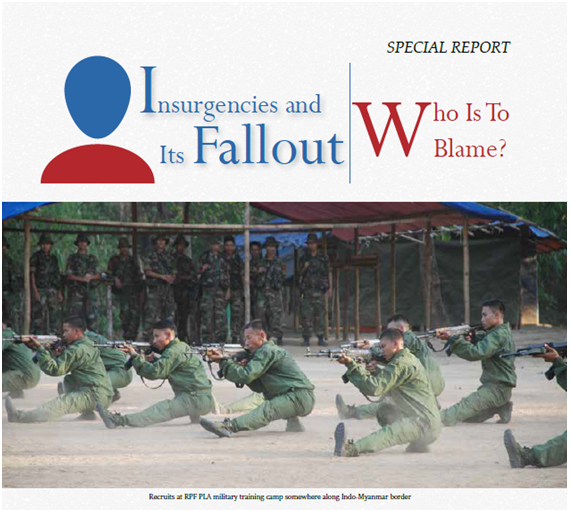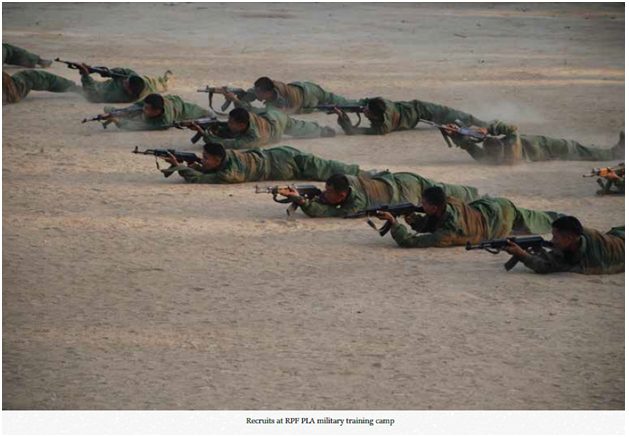
Since independent India in 1947, Northeast India has witnessed a bewildering line-up of insurgencies encompassing states such as Nagaland, Mizoram Manipur, Assam, Tripura, Arunachal Pradesh and Meghalaya, as well as the upper Sagaing region of Myanmar. The Naga insurgency which came to birth as ‘Naga hostiles’ is without a doubt, the ‘mother’ of insurgencies in the region considering its military and political strength.
Fortunately for India, the hostilities with major Naga armed groups ended since 1997 through Ceasefire Agreements and dug-in on a never-ending spree of peace negotiation.
It is another matter that the negotiation with the Nagas is hampered by ambiguous ceasefire rules and the complex questions surrounding the fate of the ethnic Nagas beyond Nagaland itself and the perceived fear of fragmentation of the existing political borders of neighbouring states like Manipur, Arunachal Pradesh and Assam.
It is a fact that many viewed the on-going ‘Indo-Naga Political Peace Talks’ as the forerunner to resolving all of the divisive armed movement going on in the region. On the positive side, the Indo-Naga Talks has yielded at least a ‘Framework of Agreement’ and just when words were doing the rounds that the ‘talks’ is coming close to culminating into an accord, the tone and substance of a statement made by the peace talks interlocutor-turned Nagaland Governor R.N. Ravi, revealed the fragility of the talks. The Former Deputy National Security Advisor (NSA) to the Modi government has accused the NSCN IM of “mischievously” delaying the peace pact “under the shadow of guns” and stated categorically that the Centre would drop the outfit – the principal signatory of the agreement – and proceed to deliver the accord with other stakeholders if required. This meant that the Centre is ready to set aside the framework agreement – once termed as “historic” by Prime Minister, Modi himself. Apparently the top leaders of the NSCN (IM) have been insisting on concepts mentioned in the framework agreement, such as ‘shared sovereignty’ and ‘unique history’ of the Nagas. Anthony Shimray, the military chief of the NSCN (IM) was quoted saying that the government of India had conceded that the history of the Nagas was ‘unique’ and that there would be ‘shared sovereignty’ with the rest of India.
Allegedly, the Centre and the armed group are not on the same page while interpreting framework of agreement. Governor Ravi had stated categorically that there would be no separate flag and constitution for the Nagas under the peace deal. Ravi stated that the NSCN-IM has “adopted a procrastinating attitude to delay the settlement raising the contentious symbolic issues of separate Naga national flag and constitution on which they are fully aware of the Government of India’s position.” Significantly, the Centre’s stalemate with the NSCN-IM reached its zenith after the abolition of Article 370 of Jammu and Kashmir. In one stroke, the Modi government abolished the provision under which the state had a separate flag and a constitution.This swift move of the centre has added an air of apprehension in Nagaland about the possibilities of a similar action against the special provisions that are enshrined in Article 371A for the Nagas. Article 371A states that no act of Parliament -- with respect to religious or social practices of the Nagas, their customary law and procedure, administration of civil and criminal justice involving decisions according to Naga customary law, ownership and transfer of land and its resources -- shall apply to the state unless the Assembly decides by a resolution. AchumbemoKikon, spokesperson of the Naga People's Front (NPF) said, "As an Opposition party, we are confident that the central government will not dare to take the Jammu and Kashmir path in Nagaland, lest the sentiments of Naga people are hurt and the consequences would be severe." Even with the central government of India clarifying has said that it has no plans to scrap Article 371A.
Notwithstanding the decline of violent activities in the last one decade and several ‘political talks’ between a number of armed ethnic groups who are on ‘Suspension of Operation Agreements with the government, the on-going Indo-Naga talks seems to be giving the wrong signals, specially to the Manipur insurgents who seemed to have hardened their stance by indicating that there are no other options other than to endure on the armed struggle against India, a conflict characterized as low-level violence, militarisation and civilian insecurity.
Lt. Gen Anil Chauhan, the Eastern Army Commander while commenting on the current status of the armed conflict in the region said, “Insurgency is on a decline in the Northeast. Overall militancy-related incidents have declined by about 12% and the arc of violence in the entire North East has shrunk primarily to an area which is the tri-junction between Assam, Arunachal Pradesh and north Nagaland.”
Sunzu Bachaspatimuyum
To read the further articles please get your copy of Eastern Panorama March issue @http://www.magzter.com/IN/Hill-Publications/Eastern-Panorama/News/ or mail to contact @easternpanorama.in


